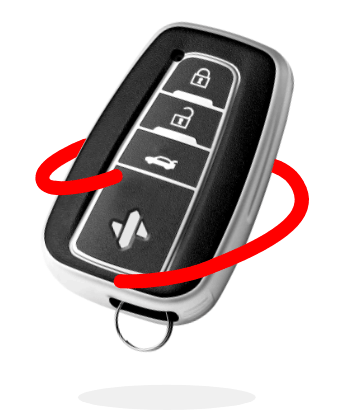Embedded insurance is becoming a game-changer in how companies package products and services. By integrating insurance directly into a product or service at the point of sale, businesses can create seamless, customer-first experiences that add significant value.
For retail and travel industries, embedding insurance as part of a larger product bundle simplifies the purchasing process, builds customer loyalty, and drives revenue.
But how does embedded insurance enhance product bundling, and why should businesses care? Whether you run an e-commerce platform, sell travel packages, or offer electronics, understanding and leveraging embedded insurance could give you the edge over competitors while meeting rising customer expectations for convenience and personalization.
WHAT IS EMBEDDED INSURANCE?
Embedded insurance weaves insurance coverage directly into the purchase process of a primary product or service. Instead of forcing customers to seek out coverage separately, insurance is automatically included or offered as an option alongside other purchases. For example, you may have noticed travel insurance offered when booking flights or rental car coverage included in your vehicle hire.
This type of integration doesn't just make it easier for customers to choose and understand their insurance options. It creates opportunities for businesses to bundle complementary services in a natural and beneficial way for the end-user. When executed effectively, embedded insurance becomes more than just an add-on; it becomes a value-rich component of the total product offering.
THE BENEFITS OF EMBEDDED INSURANCE IN PRODUCT BUNDLING
1. Elevate the Customer Experience
Customers today want simplicity and convenience. They don't want to visit multiple platforms or engage in lengthy processes to get what they need. Embedded insurance meets these needs head-on by removing the friction involved in purchasing insurance separately. With everything packaged together, customers benefit from an effortless buying experience.
Take the example of a tech marketplace that bundles repair insurance with a smartphone purchase. This reduces stress for the customer by handling their protection plans upfront. For the business, it builds trust and credibility by anticipating the customer's needs and addressing them proactively.
2. Enhance Perceived Value
Packing insurance into a bundle can increase the perceived value of the overall offering. For instance, pairing a fitness membership with health insurance or wear-and-tear coverage for gym equipment makes the bundled product feel more comprehensive and customer-focused.
By including insurance that directly enhances the primary product, businesses create a win-win situation for themselves and their customers. This increases the likelihood of completing the sale and bolsters the product's appeal in a competitive market.
3. Drive Revenue Growth
Embedded insurance can unlock new revenue streams for businesses. Offering a carefully curated product bundle with insurance can increase average order values, as customers are more likely to purchase a product when additional peace of mind is bundled in.
In addition, insurance partners often offer businesses a cut of the premium, creating ongoing revenue opportunities. Companies can turn occasional transactions into recurring income by incorporating this seamless integration into product bundling strategies.
4. Distinguish Your Brand
Product bundling is nothing new, but embedding insurance takes it to the next level. By offering meaningful, worry-free solutions, businesses can stand out as trusted providers in their industry.
Whether a luxury car dealership offers roadside assistance as part of the purchase or a furniture retailer includes accident protection with a dining table, bundling products, services, and insurance can position a brand as forward-thinking and customer-centric.
PRACTICAL APPLICATIONS OF EMBEDDED INSURANCE IN PRODUCT BUNDLING
The best examples of embedded insurance are often industry-specific and tailored to solve real problems for the customer. Here are some successful applications to inspire your strategy.
Travel Industry
Airlines, hotels, and travel agencies frequently embed trip-cancellation or delay insurance into package deals. For example, a family booking a vacation might receive one price that covers flights, accommodations, and travel insurance in a single check-out.
E-Commerce Platforms
Electronics retailers often bundle damage protection or warranty insurance with their products. Instead of manually selecting extended protection, customers can see pre-bundled options when shopping for laptops, phones, or televisions.
Mobility Services
Companies offering mobility solutions like ride-shares or e-scooters embed insurance packages that cover liability and accidents. This not only enhances customer confidence but also ensures compliance with local regulations.
Home Services
Home appliance retailers may pair extended warranty insurance with big-ticket purchases like refrigerators or washing machines. The insurance coverage removes customer pain points around maintenance costs, making the primary product more desirable.
TIPS FOR IMPLEMENTING EMBEDDED INSURANCE EFFECTIVELY
1. Start with Customer Insight
Understand your target customers and what they value in their buying experience. What risks or concerns do they typically face related to your product? Use this insight to design bundles that address those pain points seamlessly.
2. Partner with the Right Providers
Selecting an insurance partner is critical. Choose providers that align with your industry, understand your customers, and can integrate their offerings smoothly into your existing sales processes.
3. Focus on Transparency
Customers need clarity when it comes to insurance. Ensure that embedded insurance options' terms, benefits, and costs are clearly communicated during the purchase process. Avoid hidden fees or confusing language that could erode customer trust.
4. Leverage Technology
Embedded insurance is often powered by technology, so ensure your digital infrastructure can handle automatic quotes, policy issuance, and claims integration. Investing in the right tools will save time and deliver better customer experiences in the long run.
THE FUTURE OF EMBEDDED INSURANCE
The growth potential for embedded insurance in product bundling is enormous. As more businesses adopt this approach, we’ll likely see a shift toward hyper-personalized bundles that dynamically adapt to individual customer preferences. For example, AI and data analytics could soon predict the exact insurance coverage customers prefer based on their buying habits, enabling businesses to offer more innovative, highly customized options.
Additionally, open insurance ecosystems are expected to play a major role in the rise of embedded solutions. Companies and insurers will collaborate more seamlessly, streamlining everything from integration to claims processing. This shift will allow businesses to focus more on creating value-packed bundles and less on the logistics.
Embedded insurance isn't just a passing trend; it represents a powerful way for companies to enhance product bundling strategies, improve customer satisfaction, and increase profitability. By staying ahead of these developments today, businesses can position themselves for success in tomorrow's marketplace.
Want to help your customers get the best insurance options? Get in touch with SimplyIOA today.










